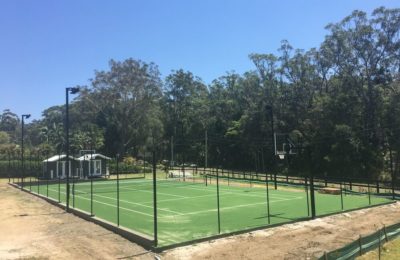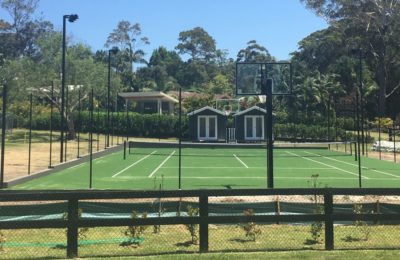Having your own tennis court can provide you with years of enjoyment, not to mention great exercise. However, if you want to get the most out of your court, it’s important to get the planning and execution just right. Here we take a look at the main points you should be thinking about when you’re building your own tennis court.
Work out your budget
Before you start, it’s vital to work out a controlled budget and stick to it. Otherwise the costs of your tennis court could easily end up spiralling out of control. There are a number of essential things to take into account if you want to gain a realistic idea of what your court is going to cost.
- What civil works will you need? Don’t forget, these are likely to include the areas surrounding your court, as well as the proposed court area itself.
- What base surface is your court being built on? This will affect the type of foundations you’ll need.
- Will you need to build retaining walls around your court?
You will also need to budget for your court surfacing, lighting and fencing, as well as the cost of labour, and any other amenities you’re likely to need both on and around your court.
Choose your site carefully
Before you start work on your court, you’ll have to work out your measurements carefully, to make sure a tennis court will actually fit on the site you’ve chosen. The standard size for the actual playing area is 23.77 metres long by 10.973 metres wide.
Don’t forget, you’ll also need plenty of space around the edges so you can hit those powerful aces. The ideal size for a home tennis court is 33.5m x 16.2m. The smallest size you should consider is 30m x 15m, and you may think about going as large as 36.5m x 18.2m if you’ve got the space, as this way your court will reach international size.
You also need to consider the positioning of the sun. If you plan to play mainly in the winter months, you may not want to choose the traditional north-south layout, as the sun being in the northern hemisphere could make for poor visibility at the south end of the court. However, if you’re going to be playing all year round, you will have visibility problems at some point in the year no matter what, due to the changing position of the sun throughout the year.
Another factor to consider is the impact of the court on your other outdoor areas – will a particular layout block your best views, or cause disruption to vegetation? How well does it complement your entertainment areas or swimming pool? The overall design should look attractive and cohesive within the space.
Standards of construction
Your tennis court’s construction will have to meet the minimum standards of the Sports Contractors Association of Australia, which you can get from your local State office.
Similarly, the court and all its fixtures will have to meet the specifications of the Cement and Concrete Association, to make sure they’re strong enough for purpose. For example, it’s vital to ensure the foundations for your fence posts are safe, secure and suitable for the type and condition of your soil.
There is a strong precedent for tennis court construction methods, and you should make sure this is being followed by choosing a reputable contractor.
Choosing the right surface
The surface you choose will have an impact on the quality of the tennis you can play on your court. Most people now choose artificial surfaces over natural grass, as they’re much easier to maintain. The most popular surfaces are sand-filled synthetic grass or acrylic courts.
However, there are a wide variety of products available in both of these categories, and every product will offer different playing conditions. It’s important to do your research thoroughly to enable you to choose the ideal court surface for your needs.
Lighting options
In order to get maximum versatility and usage from your court, you’ll need to add lighting to allow you to play at different times of day and in different conditions. These days, the most desirable lighting for tennis courts is LED lights.
The advantage of this latest lighting technology is that it provides the same level of lighting across the whole court, while minimising the amount of light that can escape into surrounding areas – so your tennis matches won’t have to annoy the neighbours, even if they go on well into the evening!
Seek professional advice
An experienced and reputable company like Sportszone Group can offer you help and advice with your tennis court every step of the way, from initial planning through to the finished court. We can help you make sure your court complies with State Planning Laws, advise you on positioning and the best surfaces to use, and make sure you end up with an ideal tennis court that you can enjoy for many years to come.
For help and advice with your home tennis court, contact us today and one of our friendly team will be in touch.


